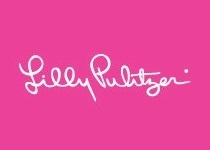Lilly Pulitzer
Accessories / Apparel / Bags / Jewelry / Shoes
It all started with a juice stand. Lilly McKim married Peter Pulitzer and needed something to keep her busy down there in Palm Beach all day long. She opened a juice stand and soon found the need f...
It all started with a juice stand. Lilly McKim married Peter Pulitzer and needed something to keep her busy down there in Palm Beach all day long. She opened a juice stand and soon found the need for something comfortable that would camouflage the stains she would get on her clothes when squeezing fruit. The result was a brightly printed dress she could wear every day, everywhere. Not only was the dress practical, it quickly became the iconic style of a fun-loving lifestyle... The Classic Lilly Shift was born.Brand Details
Founder
Lilly McKim
Brand Strategy
Market segment
Bridge
Core business
Apparel
Targets
Women, Kids
Lilly Pulitzer Financial Report 2024
Last fiscal year ended on December 31, 2020
